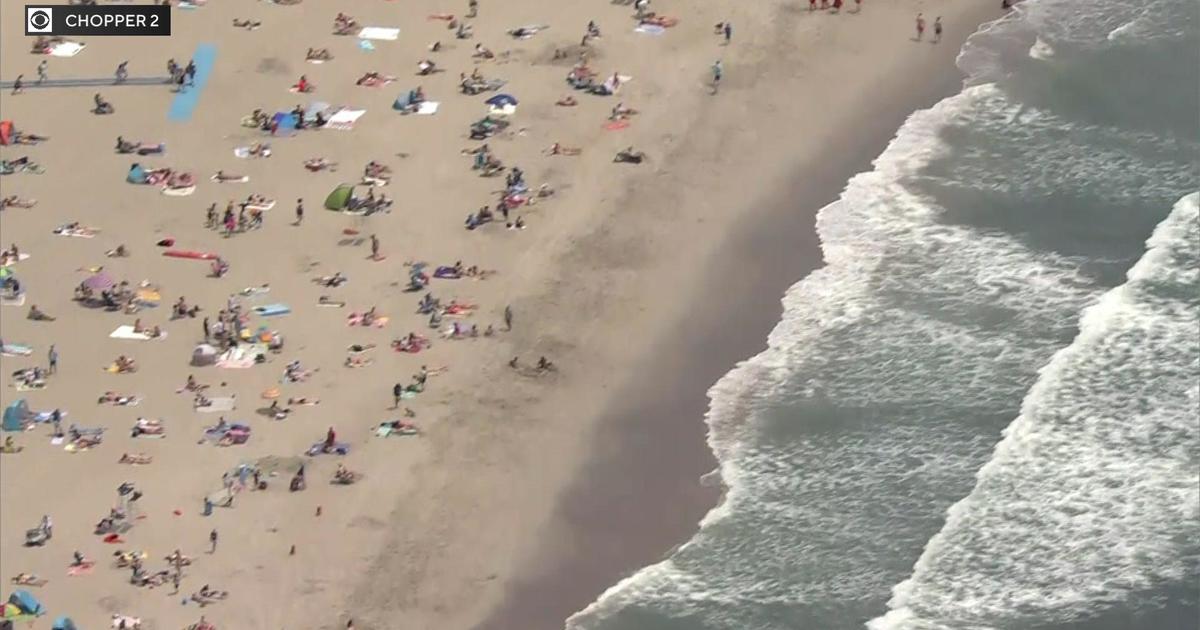Macy's Thanksgiving Day Parade: High Winds May Ground Balloons
- Check Full List Of Thanksgiving & Balloon Inflation Street Closures
- AAA Cold Weather Tips For Holiday Travel
- Watch: NYPD On Parade Security
- More Thanksgiving Tips
NEW YORK (CBSNewYork) - Will the balloons fly or won't they?
CBS2's Chief Weathercaster Lonnie Quinn explains we're in for the possibility of record-breaking cold Thanksgiving morning, with winds that just might force the parade balloons to be grounded.
The wind gusts are expected to be right at the threshold for flying balloons: sustained winds at 22 mph and gusts expected at 33 mph.
Balloons are grounded when sustained winds hit 23 mph with gusts of 34 mph.
Web extra: Lonnie Quinn on Thanksgiving forecast
"We are right there," Quinn said. "Can you even imagine a Thanksgiving parade without the balloons?"
Safety measures for balloon handling were implemented after a handful of spectators were injured due to balloons hitting things and sending debris into the crowd.
Web extra: John Elliott on the forecast
It's going to be very, very cold.
An arctic air mass will drop in, sweeping across the northeast with some of the coldest air for Thanksgiving ever recorded. Temperatures in New York CIty are expected to be around 22 degrees at the start of the parade, but with the wind chill, it will feel like 5 degrees.
Web extra: NYPD on parade security
"Thursday morning is really going to be the worst of it," said CBS2 meteorologist John Elliott.
The last time the parade was canceled was in 1971, due to high winds and heavy rains.
Click here to check the forecast.
Considering the intense cold, AAA is urging motorists to make sure their cars are ready to start.
"This is weather we normally wouldn't experience for another month, and cars may not have had their annual pre-winter check," said Robert Sinclair, Jr. of AAA.
Here are more tips from AAA:
- Battery and charging system: Have the battery and charging system tested if your vehicle's battery is more than three years old. Even a good battery can lose up to 60 percent of its capacity when temperatures drop to zero. At freezing, a battery can lose up to 30 percent of its power.
- Coolant: Check the coolant level in the overflow tank when the engine is cold. If the level is low, add a 50/50 solution of coolant and water to maintain the necessary antifreeze capability. A 50/50 mix of antifreeze and water will protect your car's engine to minus 34 degrees Fahrenheit. Check the cooling system hoses for leaks, cracks or loose clamps. Any hoses that feel brittle or spongy when squeezed, should be replaced.
- Ignition: Today we don't think about tune-ups like we once did with older cars, but ignition systems can fail. Damaged ignition wires, a cracked distributor cap or worn spark plugs can make starting difficult. If the check engine light is flashing, this indicates an engine misfire that could be a result of a malfunctioning ignition system. Driving with a flashing check engine light will permanently damage the engine catalytic convertor, a very expensive repair.
- Oil: Always have your oil changed per manufacturer recommendations. You should have your vehicle's transmission fluid level checked as well. Synthetic oil is a benefit in every vehicle and will allow for quicker starts in very cold weather.
- Tires: Tire lose pressure in severe cold. Make sure tires are properly inflated before hitting the road. In areas with heavy winter weather, installing winter tires on all four wheels will provide the best traction. Winter tires are also formulated to remain flexible in very low temperatures. All-season tires work well in light-to-moderate snow conditions, provided they have adequate tread depth. Examine tires for tread depth, uneven wearing and cupping.
- Washer fluid: Fill the windshield washer fluid reservoir with a winter cleaning solution that has antifreeze components. Look for washer fluid that protects well below freezing temperatures.
- Wipers: Wiper blades should completely clear the glass with each swipe. Replace any blade that leaves streaks or misses spots.
- Engine Warm up: Extensive engine warm ups are not necessary even in very cold weather. A more fuel-efficient technique is once the car is running, you've selected your favorite radio station and your seat belt is fastened, drive gently until the engine comes up to operating temperature.



